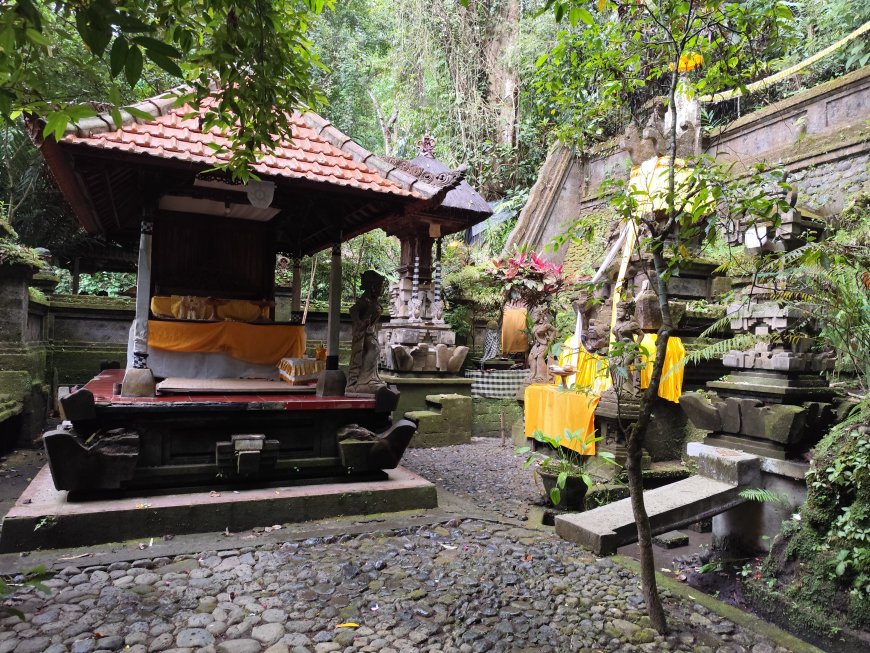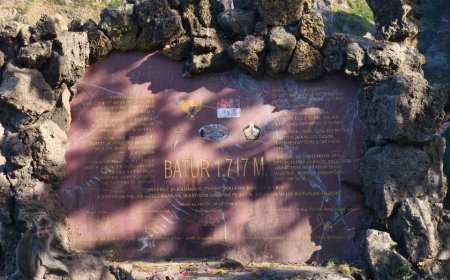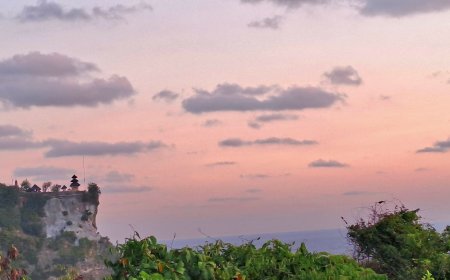Beji Pancoran Dedari Ubud Temple: A Hidden Sacred Spring in the Village of Ubud
In Balinese life, springs are considered one of the primary sources of life, especially those that are sanctified. Religious ceremonies held by the Balinese people are closely related to water. The water used for religious ceremonies must come from a sacred spring. Every village in Bali typically has a sacred spring, including the village of Ubud. One such sacred spring in Ubud is located at Beji Pancoran Dedari Temple.

Water is an essential element in the performance of religious ceremonies for the Balinese. For the Balinese, water signifies fertility, purification, healing, cycles, eternity, and well-being. The water used in ceremonies is holy water taken from sanctified springs or obtained through specific rituals. The use of this holy water is also not arbitrary; the water used for Dewa Yadnya (offerings to the gods) and Pitra Yadnya (ancestral offerings) has distinct collection places and rituals, as does the water used for other Yadnya purposes.
Sacred springs have profound spiritual meaning as a source of water used in Yadnya. Many sacred springs in Bali serve various ceremonial purposes. Every village across Bali has a sacred spring for religious ceremonies, including in the village of Ubud. One such sacred spring in Ubud is the pancoran (spring) located within Beji Pancoran Dedari Temple.

Pancoran Dedari, Area with Three Springs (Photo Source: Personal Collection)
Beji Pancoran Dedari Temple is one of the Beji temples in Ubud. This temple originated from the presence of a spring used as a royal bathing place by past Ubud rulers. It is also said to have been a bathing place for the revered Ida Pedanda Bunutan. The name Dedari, which translates to celestial nymph in Indonesian, represents the beauty and charm emanating from this sacred area. Because this spring was used as a bathing place by holy people and nobles, it eventually became Beji Pancoran Dedari Temple and was sanctified by the local community.
A Beji Temple is typically associated with the presence of a spring or pool that is considered sacred by the local community. Generally, Beji Temples are located near springs or rivers and are often somewhat hidden from public reach. Beji Pancoran Dedari Temple in Ubud is no exception.

Area with Two Springs (Photo Source: Personal Collection)
The Beji Pancoran Dedari Temple is located by the Campuhan River. To reach this temple, one must walk along a path about 300 meters along the riverbank. The experience of following this riverside trail is not to be overlooked. The lush and dense trees create a cool and natural atmosphere. The sounds of insects calling to each other add to the freshness of the journey to Pancoran Dedari Temple. The gentle gurgling of the Campuhan River also enhances the ambiance as one makes their way to Beji Pancoran Dedari Temple.
Upon reaching the area of Pancoran Dedari Temple, the atmosphere feels soothing and cool. Because of its hidden location, plants and trees grow naturally. There are about three separate pancoran areas, with a total of six springs in all.

Area with One Spring (Photo Source: Personal Collection)
There is also the Utama Mandala, or inner sanctum, of Pura Beji Pancoran Dedari in Ubud, which contains several shrines. The Utama Mandala, or Jeroan, is the most sacred part of a temple. In this area, the community performs prayers to seek safety and well-being. The Utama Mandala is adorned with numerous statues that enhance the aesthetics and beauty of the temple grounds. The architecture within the Utama Mandala retains a traditional, ancient style, which adds to the mystical ambiance of Pura Beji Pancoran Dedari. Situated away from bustling crowds, the serene atmosphere allows for a deep, focused state of worship. The sounds of the river and surrounding wildlife, along with the lush trees, create a rare spiritual experience, as many temples today are located near busy areas.

Utama Mandala of Beji Pancoran Dedari Ubud Temple (Photo Source: Personal Collection)
The existence of sacred springs in Bali must be preserved and maintained. As Balinese people who practice Yadnya and religious ceremonies, we must always uphold the purity and cleanliness of the springs that serve as a source for ceremonial purposes. These springs are a source of life and hold symbolic meaning as places for purification and self-cleansing. Today, Pancoran Dedari is still frequently used by the community when sacred water is needed. Typically, the holy water taken from Pura Beji Pancoran Dedari is used for Manusa Yadnya and Pitra Yadnya ceremonies.






























































